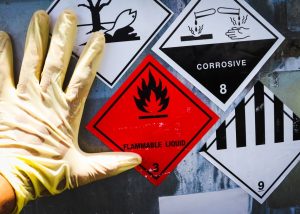-
15
Jan
How to Safely Dispose of Hazardous Goods with a Hazmat Air Cargo Service

Transporting goods that could endanger people’s health, safety, property, or environment is known as hazardous goods (Hazmat) air freight service. For everyone’s safety during the transit procedure, these commodities must adhere to stringent rules and regulations. Key elements and things to think about for hazmat air cargo services are as follows:
1. Adherence to Regulations:
International and national laws, such as the International Air Transport Association’s (IATA) Dangerous products Regulations, and national agencies like the U.S. Department of Transportation (DOT) regulate the transportation of dangerous products. It is required that you abide by these regulations.
2. Grouping of Hazardous Products:
Various categories are used to categorize dangerous commodities, including but not limited to explosives, flammable liquids, caustic compounds, and radioactive materials.
3. Packaging specifications:
Shipments of hazardous materials must be packed in containers that adhere to legal requirements for the particular category of hazardous materials. It is essential to package properly to avoid spills, leaks, or reactions while being transported.
4. Marking & Labeling:
Hazard symbols, warnings, and other pertinent information must be properly labeled and tagged on hazardous items. By doing this, it is ensured that everyone handling the shipment is aware of any possible risks.

5. Record-keeping:
Hazmat air cargo requires precise and thorough documentation. Included in this is a Shipper’s Declaration for Dangerous Goods, which gives details regarding the kind, amount, and recommended treatment of the hazardous goods.
6. Particular Care and Storage:
To avoid any potential problems, airlines and airports have set off specific sections for the handling and storage of risky commodities. These spaces have trained staff members and safety precautions installed.
7. Education and Accreditation:
Workers who handle, transport, and load hazardous materials are required to complete specific training and certification in order to guarantee that they are knowledgeable about the dangers and capable of managing emergencies.
8. Plans for Emergency Response:
There are thorough emergency response strategies in place for hazmat air cargo services. This covers how to handle spills, leaks, fires, and other hazardous material-related emergencies.
9. Security Procedures:
Owing to the possible risks connected to hazardous goods, security protocols are put in place to guard against unwanted access and guarantee the integrity of shipments of these products.

( Flammable liquid symbol on the chemical tank )
10. Prohibited and Restricted Items:
Depending on their level of risk, certain dangerous items may be limited or forbidden for air shipment. These limits are closely followed by freight and airline operators.
Compressed gases, chemicals, flammable liquids, radioactive materials, and infectious pathogens are a few examples of hazardous products that are frequently carried by air.Prioritizing the safety of people and the environment, hazmat air cargo services are vital in enabling the safe and controlled delivery of goods that are necessary for many sectors.
Need Help? Chat with us!
Start a Conversation
Hi! Click one of our members below to chat on WhatsApp
We usually reply in a few minutes






